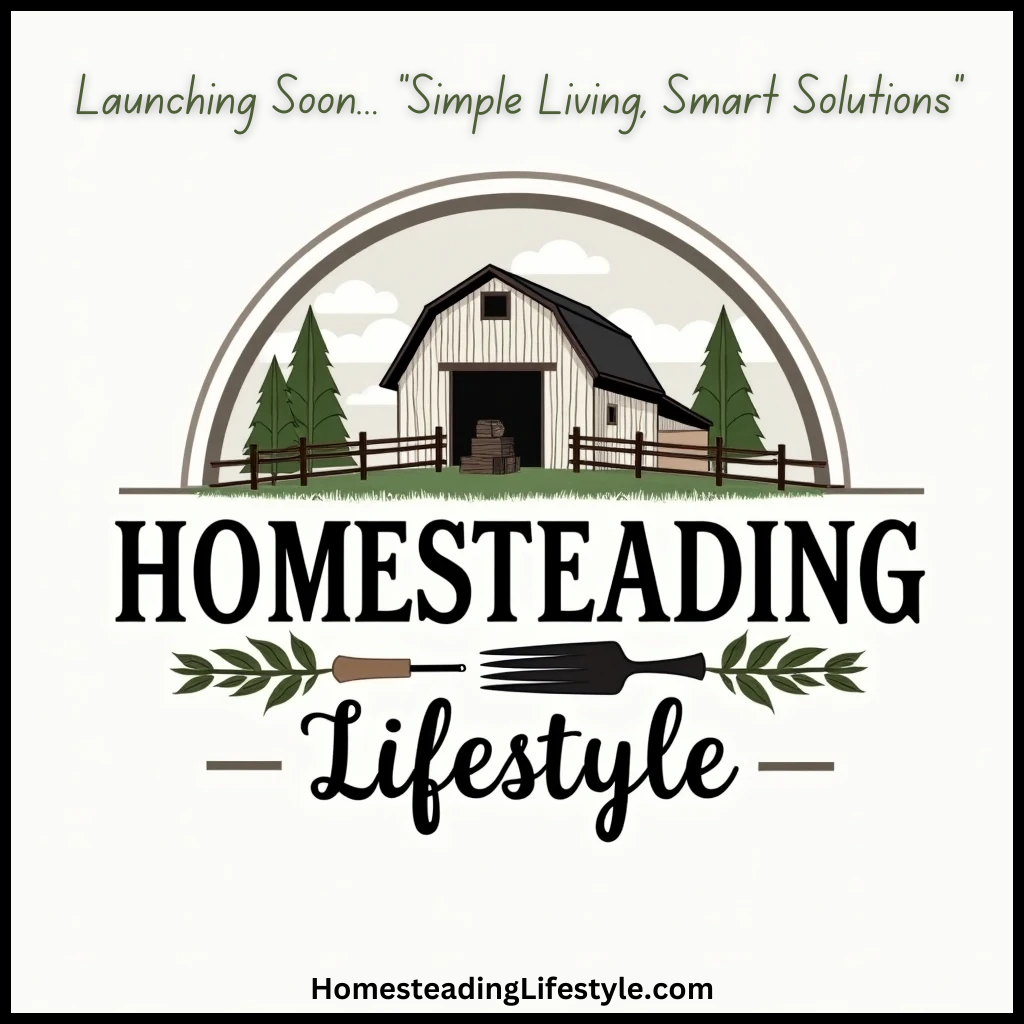- 1. Embrace Sustainable Gardening Practices
- 2. Raise Livestock Responsibly
- 3. Preserve Food Effectively
- 4. Use Off-Grid Renewable Energy
- 5. Create a Self-Sufficient Water System
- 6. Build Community Connections
- 7. Practice Permaculture Design
- 8. Manage Pest and Disease Naturally
- 9. Keep Learning and Adapting
- 10. Prioritize Wellness and Balance
1. Embrace Sustainable Gardening Practices
Smart Composting and Soil Health
One of the foundational aspects of the homesteading lifestyle tips for 2025 is to prioritize sustainable gardening practices. Composting is essential, turning organic waste into nutrient-rich soil that can greatly improve plant health. By composting kitchen scraps, yard waste, and manure, you close the nutrient loop and reduce reliance on commercial fertilizers. Healthy soil is vital, as studies show that regenerative practices boost crop yields by up to 20% while restoring ecological balance.
Incorporate cover cropping and crop rotation to prevent soil depletion and reduce pest buildup. These practices improve soil structure and microbiome diversity, leading to more resilient plants and healthier yields. As a homesteader, keeping your soil alive is one of the best ways to ensure sustainability and productivity for years to come.
Tip: Test your soil annually to understand its pH and nutrient levels. Invest in organic amendments like composted manure or kelp meal for optimal growth. Sustainable soil management will be your secret weapon in mastering homesteading lifestyle tips in 2025.
Plant Selection for Resilience
Choosing the right plants is critical, especially with climate flux expected in 2025. Opt for drought-tolerant, native, and disease-resistant varieties to minimize inputs and maximize yields. For example, heirloom tomatoes and local herbs can withstand the regional conditions better and provide a reliable food source.
Implement succession planting to extend harvests and ensure continuous yields. Selecting a diverse plant palette also helps hedge against pests and crop failures, aligning with the homesteading lifestyle tips focused on sustainability and resilience.
Practical tip: Use permaculture principles to design plant zones that mimic natural ecosystems, improving efficiency and reducing resource usage.
2. Raise Livestock Responsibly
Choose the Right Animals
Raising livestock is a core element of the homesteading lifestyle tips, helping provide meat, dairy, and fertile manure. In 2025, select animals suited to your climate, space, and experience level. Chickens for eggs, goats for milk, and heritage breeds for meat are popular options that also contribute to ecological balance.
Invest in proper infrastructure to prevent disease and ensure humane treatment. Ethical and responsible husbandry not only promotes animal welfare but also improves productivity, feeding back into your sustainability goals.
Begin small: a flock of chickens or a pair of goats can provide valuable resources and teach fundamental farm management skills.
Implement Organic and Ethical Practices
In 2025, there’s a growing emphasis on organic and humane livestock practices. Avoid antibiotics and growth hormones; instead, focus on pasture-based systems and rotational grazing. This approach reduces environmental impact and produces healthier products.
Manage manure effectively to avoid runoff and pollution. Compost it for use in gardens or convert it into biogas for energy. Such practices are integral to the homesteading lifestyle tips aimed at creating a truly sustainable operation.
3. Preserve Food Effectively
Modern Techniques in Food Preservation
Food preservation is not just about storageâitâs a vital part of homesteading lifestyle tips for self-sufficiency. Techniques like dehydration, fermentation, and pressure canning have evolved, making them safer and more efficient in 2025. For instance, water bath canning is suitable for jams and pickles, while pressure canning handles low-acid foods like vegetables and meats.
Fermentation is gaining popularity not only for flavor but also for probiotic health benefits. Homemade sauerkraut, kimchi, and yogurt are easy to prepare and can last months without refrigeration if stored properly.
These methods help you enjoy seasonal bounty year-round, reduce food waste, and save moneyâkey benefits aligned with homesteading lifestyle tips.
Implementing Smart Storage Solutions
Invest in well-insulated root cellars or climate-controlled storage areas for long-term preservation. Label everything clearly and organize contents for easy access. Durable, reusable jars and vacuum sealers are eco-friendly options that support sustainability goals.
Remember, proper storage extends the shelf life of preserved foods, ensuring that your efforts in the garden and kitchen are not wasted. These practices are essential for mastering homesteading lifestyle tips in 2025.
4. Use Off-Grid Renewable Energy
Solar Power for Homesteaders
By 2025, solar energy remains the most accessible renewable source for homesteaders. Installing solar panels allows you to generate electricity independently, reducing reliance on the grid. The cost of solar technology has dropped significantly, making it a practical investment for sustainable living.
Pair your photovoltaic system with battery storage to ensure power during cloudy days or at night. This setup helps maintain essential daily functionsâlighting, appliances, and water pumpsâwithout electricity bills.
Tip: Regular maintenance and monitoring of your solar system maximize efficiency and lifespan, aligning with the homesteading lifestyle tips for independence and resilience.
Harnessing Wind and Micro-Hydro
If your property has consistent wind or water flow, consider adding small-scale wind turbines or micro-hydro generators. These sources can supplement solar power and provide a reliable energy stream, especially in rural areas.
Integrating various renewable sources reduces your carbon footprint and creates a sustainable energy system tailored to your location. In 2025, diversifying your energy portfolio is an essential component of the homesteading lifestyle tips for self-sufficiency.
5. Create a Self-Sufficient Water System
Rainwater Harvesting and Storage
Water independence is vital for sustainable homesteading. Installing rainwater harvesting systems enables you to collect and store rainwater for garden irrigation, livestock, and household use. Use gutters, downspouts, and cisterns with filters to ensure quality water.
In 2025, focus on proper filtration and purification methods to guarantee safety. Harvested rainwater reduces dependence on municipal sources and minimizes water bills.
Tip: Incorporate overflow and emergency connections to prevent flooding and ensure continuous supply during dry seasons.
Efficient Water Use and Conservation
Implement drip irrigation and mulching to maximize water efficiency in your garden. Fix leaks promptly and use water-saving fixtures inside your home. These simple steps ensure you are making the most of your water resourcesâcrucial in dry or drought-prone areas.
Tracking your water usage helps identify waste and opportunities for conservation. Mastering a self-sufficient water system is a cornerstone of the homesteading lifestyle tips for resilience in 2025.
6. Build Community Connections
Bartering and Sharing Resources
Strong community ties can significantly enhance your homesteading lifestyle tips. Bartering goods and servicesâlike exchanging eggs for produce or toolsâfosters resilience and reduces expenses. Local homesteader groups often organize swaps, workshops, and cooperative ventures.
Sharing knowledge enhances skill-building and creates a support network. Building relationships with neighbors and local farms encourages a sustainable and thriving rural community.
Tip: Join online forums or local groups focused on homesteading and sustainable living to expand your network and share resources effectively.
Participate in Cooperative Buying
Bulk purchasing seeds, equipment, and bulk feed help reduce costs. Cooperative buying clubs strengthen community bonds and ensure access to quality supplies at better prices. This approach aligns with homesteading lifestyle tips centered around economical and eco-friendly living.
Collaborative efforts can also include shared equipment like tractors or processing equipment, saving money and space.
7. Practice Permaculture Design
Design for Efficiency & Sustainability
Permaculture combines design principles that mimic natural systems, making homesteading more efficient. In 2025, adopting permaculture practices minimizes inputs while maximizing outputs. Think layered planting, water catchment integration, and zones for different activities.
For example, planting trees that provide shade and fruit near vegetable beds creates microclimates and conserves water. This approach enhances biodiversity and reduces maintenance needs.
Tip: Use permaculture design tools to map your property and plan zones that work harmoniously, ensuring long-term sustainability in your homesteading lifestyle.
Soil and Water Management
Key permaculture techniques include swales, contour planting, and mulch to manage erosion, improve water infiltration, and maintain moisture. These strategies help create a food forest that sustains itself over time.
Applying these principles saves resources and increases resilience to climate fluctuations, perfectly aligning with homesteading lifestyle tips for 2025.
8. Manage Pest and Disease Naturally
Integrated Pest Management (IPM)
In 2025, natural pest and disease control is critical for sustainable living. Emphasize biological controls like beneficial insects, companion planting, and crop rotation to keep pests in check without harmful chemicals.
Examples include planting marigolds to deter nematodes or attracting ladybugs to control aphids. These methods prevent contamination of your food and soil, supporting the homesteading lifestyle tips focused on eco-friendly practices.
Consistent monitoring and early intervention are keyâregularly inspecting plants helps catch problems before they escalate.
Use of Natural Remedies and Folk Practices
Homesteaders often rely on homemade sprays using garlic, neem oil, or chili peppers. These natural remedies are effective and safe, aligning with the health-conscious aspect of homesteading lifestyle tips.
Experimenting with these solutions can save money and reduce chemical dependency, making your homestead more eco-friendly.
9. Keep Learning and Adapting
Stay Updated with Trends and Technology
Continuing education is vital. Attend workshops, read books, and follow online communities dedicated to sustainable living. In 2025, technological advancements like smart gardening tools and renewable energy innovations are making homesteading easier and more efficient.
Adapting to new methods and sustainable practices ensures your homestead remains productive and environmentally sound. Never stop learning â itâs a core component of the homesteading lifestyle tips for success.
Document and Reflect on Your Progress
Keep a journal or digital record of activities, successes, and challenges. Reflection helps you refine your methods and adapt to changing conditions. Sharing your journey inspires others and creates a sense of community.
In 2025, embracing a mindset of continuous improvement ensures your homesteading journey remains rewarding and sustainable.
10. Prioritize Wellness and Balance
Mental and Physical Health
Homesteading is physically demanding, but balancing work and rest is essential. Incorporate mindfulness, outdoor activities, and proper nutrition into your routine. Connecting with nature can improve mental health and overall wellbeing, which is crucial for maintaining the stamina needed to master homesteading lifestyle tips.
Practice seasonal routines for balanceâspring planting, summer harvesting, fall preservation, and winter rest. This rhythm promotes harmony and sustainability.
Tip: Regular physical activity, healthy meals, and time with loved ones make your homesteading lifestyle more fulfilling and sustainable in 2025.
Creating a Joyful Homestead Life
Finally, bring elements of joy, creativity, and community into your homestead. Celebrate your successes, document your journey, and take time to enjoy the simple pleasures of rural life. This positive mindset is a vital part of mastering the homesteading lifestyle tips for 2025.
Engaging in hobbies like cooking, crafting, or nature observation can keep you inspired and motivated for the long haul.
Conclusion
Mastering the homesteading lifestyle tips for 2025 involves embracing sustainable practices, responsible farming, renewable energy, and community engagement. By implementing these ten effective tips, you’ll create a resilient, self-sufficient, and rewarding homestead environment. Remember, the key to success is adaptability, continuous learning, and a passion for sustainable living. The homesteading lifestyle tips will guide you toward achieving independence and harmony with nature in 2025 and beyond.
Frequently Asked Questions
1. What are the best homesteading lifestyle tips for beginners in 2025?
Start small with gardening and basic livestock, focus on sustainability, and join local homesteading groups for support and advice.
2. How can I make my homestead more sustainable in 2025?
Implement renewable energy sources, conserve water, practice organic farming, and manage waste responsibly to increase sustainability.
3. How do I raise livestock responsibly on my homestead?
Select appropriate breeds, provide proper shelter and nutrition, and adopt humane husbandry practices to ensure ethical and productive livestock management.
4. Why are homesteading lifestyle tips important for 2025?
They help create resilient, eco-friendly systems that reduce reliance on external resources and promote a sustainable future amid climate and economic uncertainties.
5. How can I stay updated with new homesteading practices and technology?
Attend workshops, follow online communities, read new books, and experiment with innovative tools and techniques to keep your homestead evolving.





